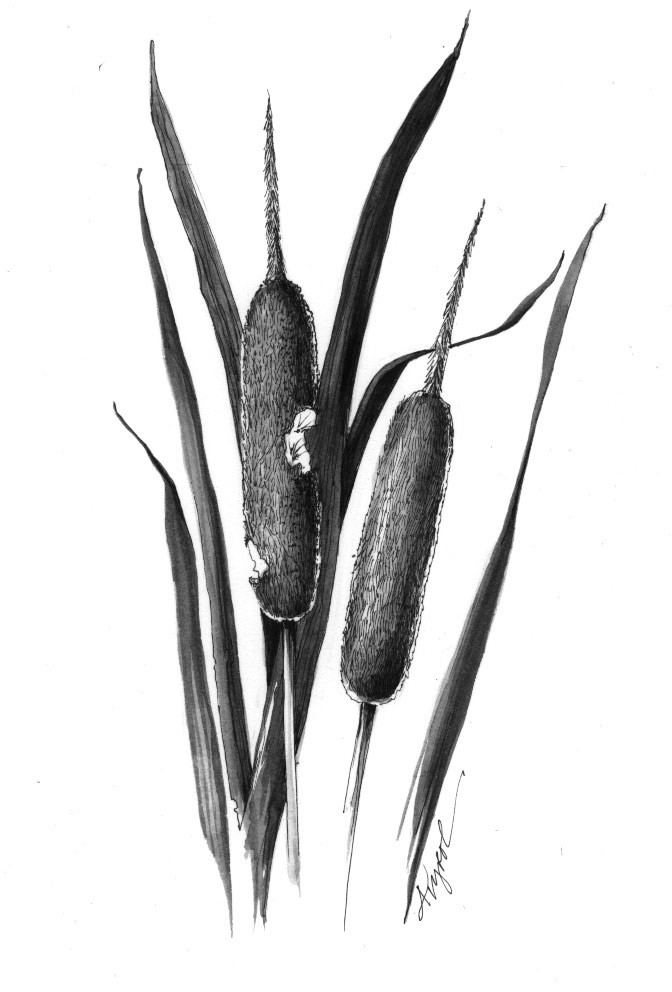
At the waning of Sogalikas, the “sugarmaker” moon, the traditional Abenaki season for gathering wild edible and medicinal plants begins. Abenaki culture has been handed down to the present day through countless generations living in communities throughout New Hampshire and Vermont, foraging a native harvest from roadsides, woodlands, wetlands, and fields. This glimpse into the traditional wild harvest draws upon extensive first-hand observations, oral tradition, archaeological site reports, observations recorded in the journals of early explorers, and other historical books and records.
Traditionally, during the early spring, maple sap was gathered in birchbark buckets. Cool sap was dipped with a birchbark cup as mildly sweet refreshment. Sap was boiled in clay pots or birchbark buckets until it became maple syrup, sogalosôbôn. Some syrup was boiled further to make maple sugar – an energy source for long journeys.
Sap from winsak, the “sweet birches” of yellow and black, was boiled into an elixir with a wintergreen essence. Tea extracted from the boiled twigs and inner bark was used as an astringent and a wintergreen mouthwash. This tea was also used by the Abenaki to treat diarrhea and rheumatism.
When Kikas, the “planter” moon rose, activity shifted to gathering early greens, groundnuts, other edible roots, and tree barks flush with vital nutrients. The prolific, earthy-tasting roots of groundnut (Apios americana) lay exposed along eroded vernal riverbanks, revealing strings of inch-wide nodules. These were cleaned, pealed, and boiled or roasted for about 30 minutes to make bite-sized, potato-like tubers.
Familiar spikes of cattail shoots and the lance-like leaves of arrowhead or duck-potato (Sagittaria latifolia) sprouted in neighboring marshes. The swellings on arrowhead roots were dug and cut away, then processed and cooked like groundnuts. A tough, fibrous covering surrounds the starchy cattail roots, which are difficult to gather but have a tender, nutritious center.
Wild leeks (Allium tricoccum) were harvested from dark riparian soil; scallion-like roots bearing intense onion flavor. This plant is so prevalent along one waterway in north-central Vermont that it is still known by the Abenaki name Winooski, “Onion” River.
The inner barks of many species conveyed potential medicines. Dried willow bark contains salicylates, which metabolize into salicylic acid (aspirin). Willow-bark tea was a painkiller and anti-inflammatory used for treating colds, diarrhea, and rheumatism, without irritating the stomach like aspirin. Bark from basswood and slippery elm were used to treat infected wounds, and that of striped maple to create a poultice that reduced swelling. Slippery elm bark tea coated and soothed the throat and stomach and eased gas, heartburn, and diarrhea.
In the forest understory, newly melted snow revealed the tiny teaberry (Gaultheria procumbens) – also known as wintergreen or checkerberry. The roundish, evergreen leaves and red berries from last summer emanate the ambrosia of wintergreen. Tender spring leaves were nibbled raw. When eating the leaves and berries, saliva and digestive juices transform the wintergreen compound into salicylic acid – nature’s chewable aspirin.
As the season progressed, the scent of wild strawberries wafted from underfoot – crimson gems of sweetness and flavor. The berries were eaten raw, put into food for flavoring, and dried for later use.
If an Abenaki contacted poison ivy while foraging, he or she simply rubbed the leaves of sweet fern (Comptonia peregrina) or stems of jewelweed onto the skin to quell inflammation. Sap from milkweed sprouts was applied directly for treating warts.
In addition to medicine, food from wild plants offered greater nutrition than many domesticated varieties, including more energy, fiber, trace elements, and essential vitamins and minerals such as vitamin C, calcium, iron, and folate.
Historically, the Abenaki viewed edibles as forming a continuum from formal vegetable gardens into wilderness. When soil became depleted after 10 to 15 years of gardening, villages were moved to new ground where piles of acorns, butternuts, chestnuts, hazelnuts, dried blueberries and seeds of other important foods were placed around the lodges. Squirrels gathered this largess and buried the fruits and nuts in secret caches. The forgotten stores became seeds of the groves of “wild” fruits and nuts that surrounded many villages. Many other desirable species were encouraged by cultivating those seeds and plants, such as rose, dock, choke cherry, grape, chenopodium, wild beans, false buckwheat, hog peanut, hawthorn, false Solomon’s seal, dropseed, bramble, and grass.
Showing respect is a strong part of the tradition. Permission was asked of the plant and of the Great Spirit, Kici Niwaskw. Patches were thinned, leaving some plants behind to continue the next generation. The tallest “Grandmother” plant was not picked – it was left out of respect for that progenitor of all others and to assure regeneration. Finally, “thanks” was offered, and a gift of seeds from that plant was left for future propagation, or a symbolic gift of sunflower seeds or tobacco to complete the circle and restore the balance.


Discussion *